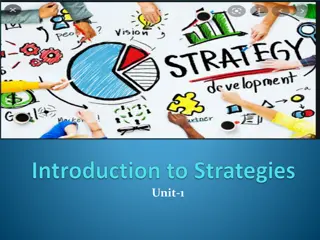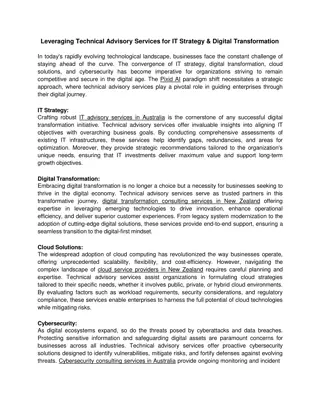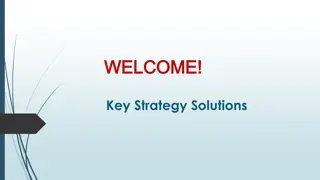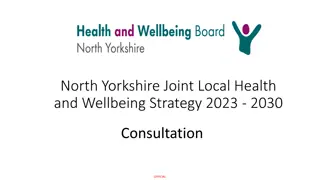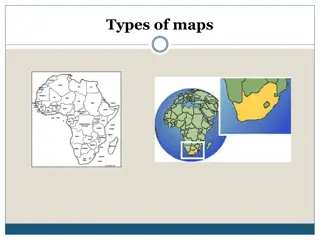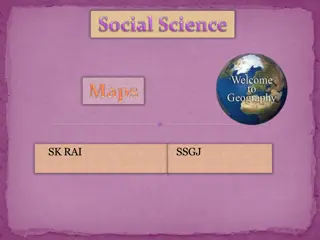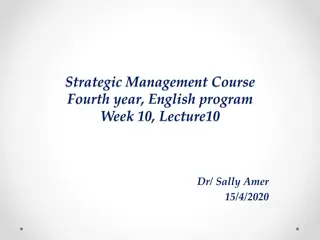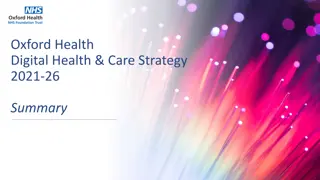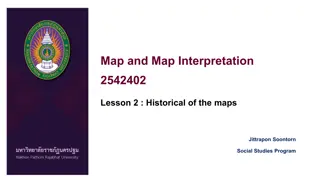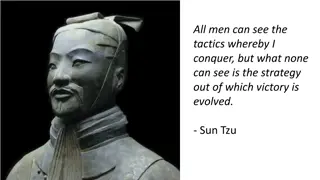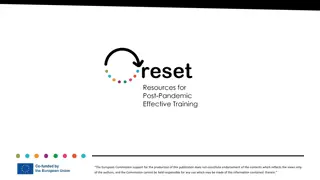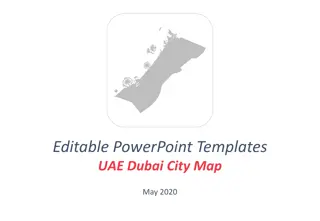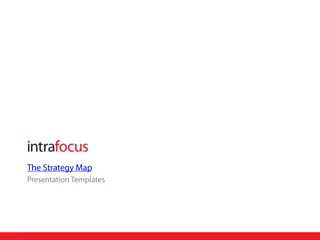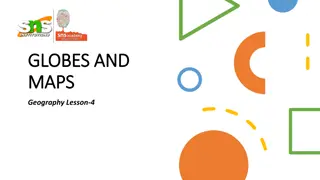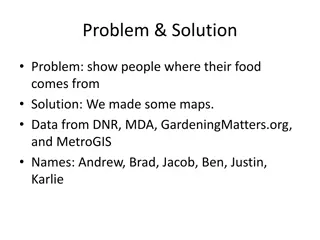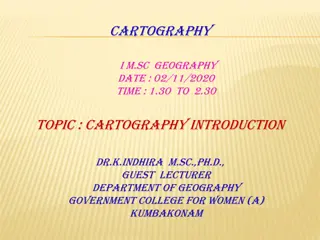Strategy Maps
Strategy maps provide a visual representation of how organizations can create value by aligning strategic objectives in a cause-and-effect relationship based on the Balanced Scorecard perspectives. They help monitor progress towards strategic goals through objectives, measures, targets, and initiatives. This comprehensive guide covers the essence of strategy maps, their components, templates, and examples from both the private and public sectors, offering insight into strategic planning and execution.
Download Presentation

Please find below an Image/Link to download the presentation.
The content on the website is provided AS IS for your information and personal use only. It may not be sold, licensed, or shared on other websites without obtaining consent from the author.If you encounter any issues during the download, it is possible that the publisher has removed the file from their server.
You are allowed to download the files provided on this website for personal or commercial use, subject to the condition that they are used lawfully. All files are the property of their respective owners.
The content on the website is provided AS IS for your information and personal use only. It may not be sold, licensed, or shared on other websites without obtaining consent from the author.
E N D
Presentation Transcript
STRATEGY MAP TEMPLATES 1
Focus, focus, focus! Any intelligent fool can make things bigger and more complex. It takes a touch of genius and a lot of courage to move in the opposite direction Albert Einstein A strategy map will allow you display your entire strategy on a single page 2
What is a Strategy Map? A Strategy Map is a diagram that describes how a company or organisation can create value by linking strategic objectives in a cause and effect relationship. It is based on the four Balanced Scorecard Perspectives: Financial, Customer, Internal Processes and Organisational Capacity. The key element of the Strategy Map is that it is linked to a scorecard that monitors the progress towards the Strategic Objectives. The scorecard will include: objectives, measures, targets and strategic initiatives/projects to drive performance towards achieving your vison and goals. 3
Classic Generic Kaplan and Norton Style Growth Strategy Productivity Strategy Financial Perspective Long-Term Shareholder Value Expand Revenue Opportunities Improve Cost Structure Increase Asset Utilisation Enhance Customer Value Customer Value Proposition Customer Perspective Price Quality Availability Selection Function Service Partnership Brand Product / Service Attributes Relationship Image Operations Management Processes Customer Management Processes Regulatory and Social Processes Internal Perspective Innovative Processes Supply Production Distribution Risk Management Selection Acquisition Retention Growth Opportunity Identification R&D Portfolio Design / Develop Launch Environment Safety and Health Employment Community Organisational Capacity Human Capital Information Capital Organisational Capital Culture Leadership Alignment Teamwork 5
Private sector example with strategic themes/priorities 6
Public Sector example with content and strategic themes Value to Taxpayer Customer & Stakeholder Safe and Convenient Bus Services On Time as Promised Financial Balance Budget Lower Cost of Bus Transportation Services Support Business and Commerce Create Business Cases and Secure Funding Internal Processes Relationship Management Innovation Operational Excellence Easy to do Business With Drive Innovation in New Transport Systems Deliver World Class Bus Services Streamline Regulatory Approval Processes Improve Sustainability of Communities Accelerate Economic Development through Route Investment Develop and Introduce New Transport Technology Provide Cost Effective Solutions Optimise Availability of Busses Open and Frequent Communication to Impacted Customers Improve All Aspects of Bus Safety Optimise Planning of Bus Stop Position and Construction Understand New Route Needs (and Old) Organisational Capacity Empowered Customer Service Agents Integrated Knowledge Management Systems Highly Skilled Bus Drivers 7
Basic strategy map background Financial Customer Processes Capacity 8
Basic empty template with oval objectives Financial Perspective What are our most important financial outcomes? Customer Perspective How should we appear to customers? Process Perspective At what do we need to excel to fulfill customer expectations? Organisational Capacity Perspective How will we sustain our ability to improve? 9
Multi coloured with branding Financial Improve Revenue Acme Strategy Map Customer Improve Marketing Process Improve Processes Capacity Improve Knowledge 11
A different approach (does not lend itself to causal relationships) Vision: Mission: Financial Internal Customer Capacity 16
A radical approach Financial This circular version is occasionally used to focus everything towards the mission and strategy, as a rally-call it works well. However it lacks in its ability to present causal linkages Mission Customer Internal Mission Vision Tesco used this approach during their Every Little Helps campaign Learning 17
Using Spider Impact to create strategy maps Software is not required to implement a Strategy Map or Balanced Scorecard, but it really helps. A good software tool will allow user to: create meaningful Strategy Maps with minimum fuss organise key metrics in a meaningful way display data and combinations of data provide management teams with a clear business overview allow users to input data easily and frequently Provide the means to drill down to the underlying data should the need arise to question a specific activity Intrafocus recommends Spider Impact as the best tool to manage strategy maps 18
Thank You 19



